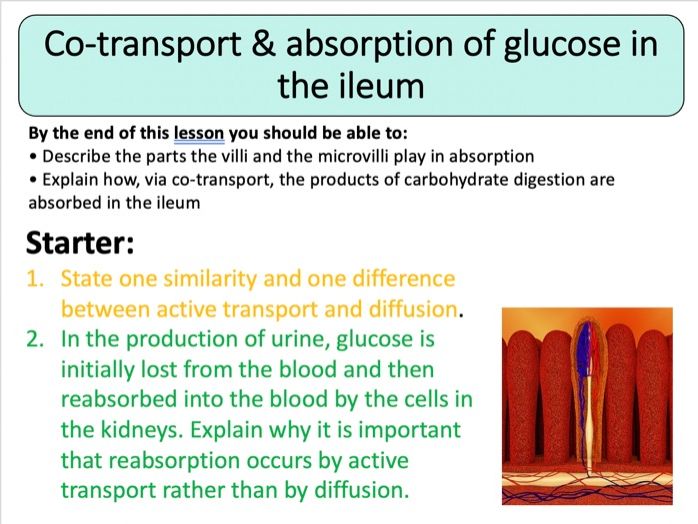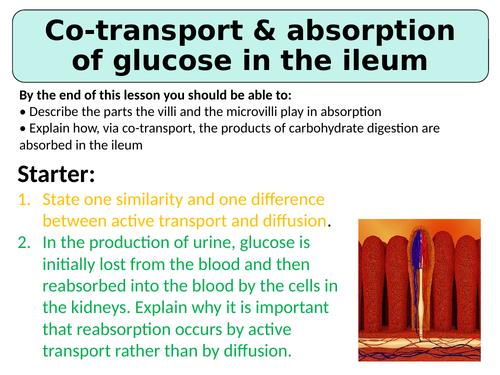

This lesson is designed for the NEW AQA AS-level Biology course, particularly the ‘Cells’ module.
For more lessons designed to meet specification points for the NEW AQA A-level Biology course please visit my shop: https://www.tes.com/teaching-resources/shop/SWiftScience
A-Level lesson format: I teach in more of a lecture style compared to GCSE. In the majority of my A-level lessons the beginning portion of the lesson is mainly teacher-led, where students are expected to take notes onto a handout/in their books. This is then mixed in with student-led activities, as well as questions and exam prep.
You will find some of my slides have blank spaces for you to add more detail/descriptions/explanations. If you look at the ‘Notes’ section underneath each of these slides, you will find additional content which you can add in as you teach!
This lesson on co-transport and absorption of glucose in the ileum begins with a starter discussion which asks students to compare and contrast transport and diffusion. They are also asked to discuss the importance of transport rather than diffusion in regard to reabsorption in the kidneys.
The first task is a microscope activity for students to work in partner pairs and investigate adaptations of the epithelial cells of the ileum. Students will set up their light microscope to examine prepared slides and answer some questions. Answer samples are in the notes below the slides.
The following slides define villi and microvilli for students to note in their books. There is a brief explanation of the relationship between increased surface area and space for carrier proteins.
Students are then introduced to the role of diffusion in absorption and should take clear notes regarding facilitated diffusion. They should use the diagram on the slide to discuss why glucose concentration differs between epithelial and ileum cells. Relying on diffusion will only result in the concentrations either side of the intestinal epithelium becoming equal. Students should discuss why this is a problem, and how it might be overcome.
The next slide is a complete diagram explaining co-transport of amino acids or glucose molecules. Students should take notes in their books because the next task is to complete a cartoon of this process and summarise the main steps.
Students are then asked to ‘think > pair > share’ about the co-transport process and decide whether it is a direct or indirect form of active transport. They should use the details on the slide to inform their discussion.
The final task is an exam-style question, with a mark scheme on the following slide for students to self-assess and consolidate their learning from this lesson.
The plenary task is to either; summarise the lesson in three sentences, or complete definitions for five key-terms from the lesson.
All resources are included. Thanks for looking, if you have any questions please let me know in the comments section and any feedback would be appreciated :)
Something went wrong, please try again later.
This resource hasn't been reviewed yet
To ensure quality for our reviews, only customers who have purchased this resource can review it
Report this resourceto let us know if it violates our terms and conditions.
Our customer service team will review your report and will be in touch.